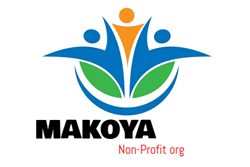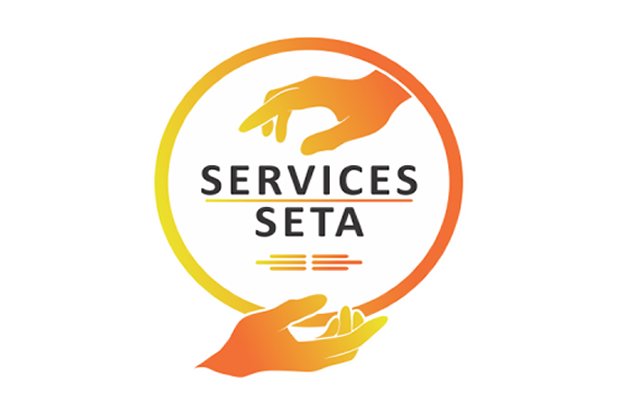
Youth Skills Computer Learnership Programmes
The quick pace of tech changes how we work. There’s a big need for skilled people in technology now. For young folks wanting a strong career, computer learnership programmes give a clear path. These programs help you get digital smarts and tech skills people want. This article shows you the good parts, what you need, and how to pick these programs. It helps you take the first step to a good job in tech.
Work is changing fast. Tech is at the heart of it. Regular school often does not give the hands-on practice employers need. Learnerships fill this gap. They offer a setup where you learn ideas and put them to use. This often leads straight to a job. Knowing what these programs are and how to stand out is key to doing well.
Understanding Computer Learnership Programmes
Computer learnership programs are special training paths. They help young people get ready for jobs in technology. These programs mix classroom learning with real work practice. They make sure you gain skills that businesses actually need.
What is a Computer Learnership?
A computer learnership is a work-based training plan. In South Africa, these often get money from Sector Education and Training Authorities, or SETAs. They follow the National Qualifications Framework (NQF) too. This means you learn theory in a classroom setting. Then, you spend time in a workplace putting that knowledge into practice. It’s a bit like an apprenticeship for the digital age. You learn by doing, seeing how things work daily.
Key Benefits for Young Learners
Joining a learnership offers many good things. You can earn an NQF-level qualification. This paper shows your skills are up to a national standard. You also get real-world work experience, which is hard to get otherwise. Many times, these programs lead to a full-time job when you finish. You get to see how a professional office runs. Plus, you pick up important soft skills like talking to people and solving problems. These skills matter just as much as tech knowledge.
Types of Computer Learnerships Available
There are many kinds of computer learnerships. Some focus on IT Support. Here, you learn to fix computers and help users. Others are for Software Development. You learn coding languages and how to build apps. Network Administration learnerships teach you to set up and keep computer networks running. You might find programs for Data Analysis, learning to make sense of large amounts of information. Cybersecurity learnerships teach you to protect computer systems from attacks. Each one helps you get ready for a specific tech job.
Eligibility and Application Process
You need to meet certain requirements to join a computer learnership. Knowing these helps you get ready. The process for applying also has a few steps.
Essential Entry Requirements
Most computer learnerships have clear rules for who can join. You usually need to be a certain age, often between 18 and 34 years old. You should have finished Grade 12, with good marks in subjects like math or science. Being a citizen or legal resident of South Africa is also a common rule. Sometimes, you might need to pass a simple computer skills test. It’s also important that you are not working when you apply. This means the program helps someone who needs a first step into a job.
Crafting a Winning Application
Putting together your application needs care. Your CV, or resume, should show any computer knowledge you have. Even if it’s just using word programs or social media, mention it. Write a cover letter that explains why you want to learn tech skills. Tell them why this learnership matters to you. Show you are eager to learn and ready to work hard. Make sure everything is neat and free of mistakes.
Navigating the Selection Process
After you apply, there are more steps. First, they check all applications. Next, you might take aptitude tests. These tests check how you think and solve problems. Then comes the interview. Be ready to talk about yourself and your interest in computers. You might also do psychometric assessments. These help the program see if you are a good fit for the tech world and its demands. Staying calm and being yourself helps a lot.
Useful Links:
Skills Acquired Through Computer Learnerships
Computer learnerships are great for learning useful skills. You pick up both technical knowledge and important people skills.
Technical Proficiency Development
You will learn many technical things. This includes how operating systems work, like Windows or Linux. You’ll get good at fixing computer problems and installing software. Many programs teach basic programming skills, letting you build simple apps. You’ll also learn about network fundamentals. This means understanding how computers connect to each other. Some programs cover database management, how to store and organize information. You might even learn cybersecurity basics, protecting data from harm. Being good with office tools like Word and Excel is also a key part.
Cultivating Essential Soft Skills
Besides tech skills, you also grow in other ways. You learn how to solve problems that come up. Thinking deeply and making good choices becomes easier. Your communication gets better, both in talking and writing. Working in a team becomes second nature. You learn to manage your time and get tasks done. Being able to adjust to new situations is another big win. You also learn how to act in a professional workplace.
Industry-Recognized Certifications
Many learnerships help you get special tech certifications. These are like badges that show you have certain skills. For example, you might get a CompTIA certification, which is well-known in IT support. Or a Microsoft certification for their software. These papers are often recognized by companies across the industry. They make you much more likely to get hired. They also help you move up in your career later on.
The Impact of Learnerships on Career Progression
- Finishing a computer learnership opens many doors.
- APPLY ON COMPANY WEBSITE
- It’s a big step towards a good job and a future in tech.
Transitioning from Learner to Employee
It’s very common for people to get a full-time job after finishing their learnership. Many learners become IT Support Technicians, helping users with computer issues. Others might start as Junior Developers, writing code for new software. Some step into roles like Network Assistant, helping to manage computer systems. The practical experience you get during the program makes you a strong candidate for these jobs. Employers often prefer someone who already knows how to work in a real business.
Building a Foundation for Continuous Learning
A learnership is not the end of your learning journey. It’s really just the beginning. It gives you a strong start for more education or special training later. The tech world is always changing. New tools and ideas appear all the time. Your learnership teaches you how to keep learning and stay current. This helps you keep growing in your tech career for many years. You build a habit of picking up new skills.
Real-World Success Stories
Many people who did these programs are doing great today. Some started in basic IT support and now manage big computer systems. Others learned coding and became lead software engineers for important projects. There are those who found their passion in cybersecurity and now protect companies from cyber threats. These programs give young people the chance to find their place in the tech field. They provide the right start for many kinds of successful careers.
Finding and Securing a Learnership Opportunity
Knowing where to look is key to finding a computer learnership. There are good ways to search for them and make sure you pick a good one.
Identifying Potential Learnership Providers
Start by looking at government groups. In South Africa, the MICT SETA often supports tech learnerships. Many big companies also run their own programs as part of giving back to the community. You can find training providers that specialize in learnerships. Check their websites or visit their offices. Also, some companies list learnerships directly on their career pages. A simple online search for “youth computer learnerships” can show you many options.
Networking and Information Gathering
Talking to people in the IT field can help a lot. Go to career fairs if you can. Many tech companies and training groups have booths there. Use online sites like LinkedIn to find learnership opportunities. Join groups related to IT skills and youth employment. People often share job openings or advice. The more people you talk to and the more places you look, the better your chances are.
Evaluating Programme Quality
Before you join any program, check its quality. Look at the training provider’s name. Do they have a good record? What do past students say about them? See if the curriculum is up-to-date and covers what you want to learn. Find out how many of their past learners got jobs after finishing. A good program will be clear about its success rates. Pick a program that truly helps you reach your goals.
Conclusion
Computer learnership programs are a powerful way to start and grow a career in today’s tech world. They give you a structured mix of learning and real work. This prepares young people with the skills and papers needed to do well in tech. For young folks who are ready to work hard, a learnership is more than just getting a paper. It’s putting your money on a future of always learning, getting better at your job, and finding important work in a key part of the economy.






